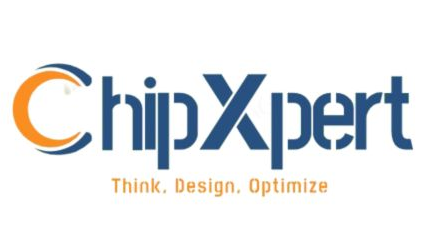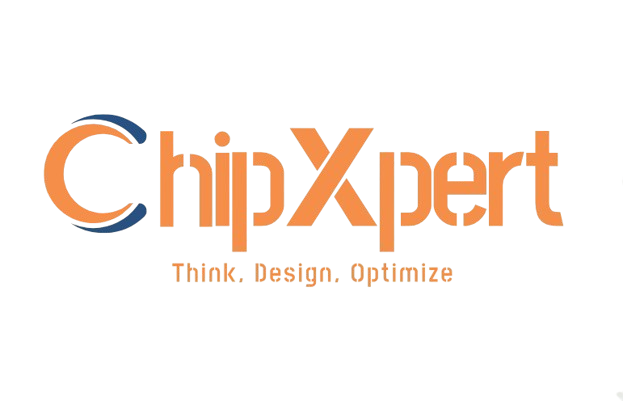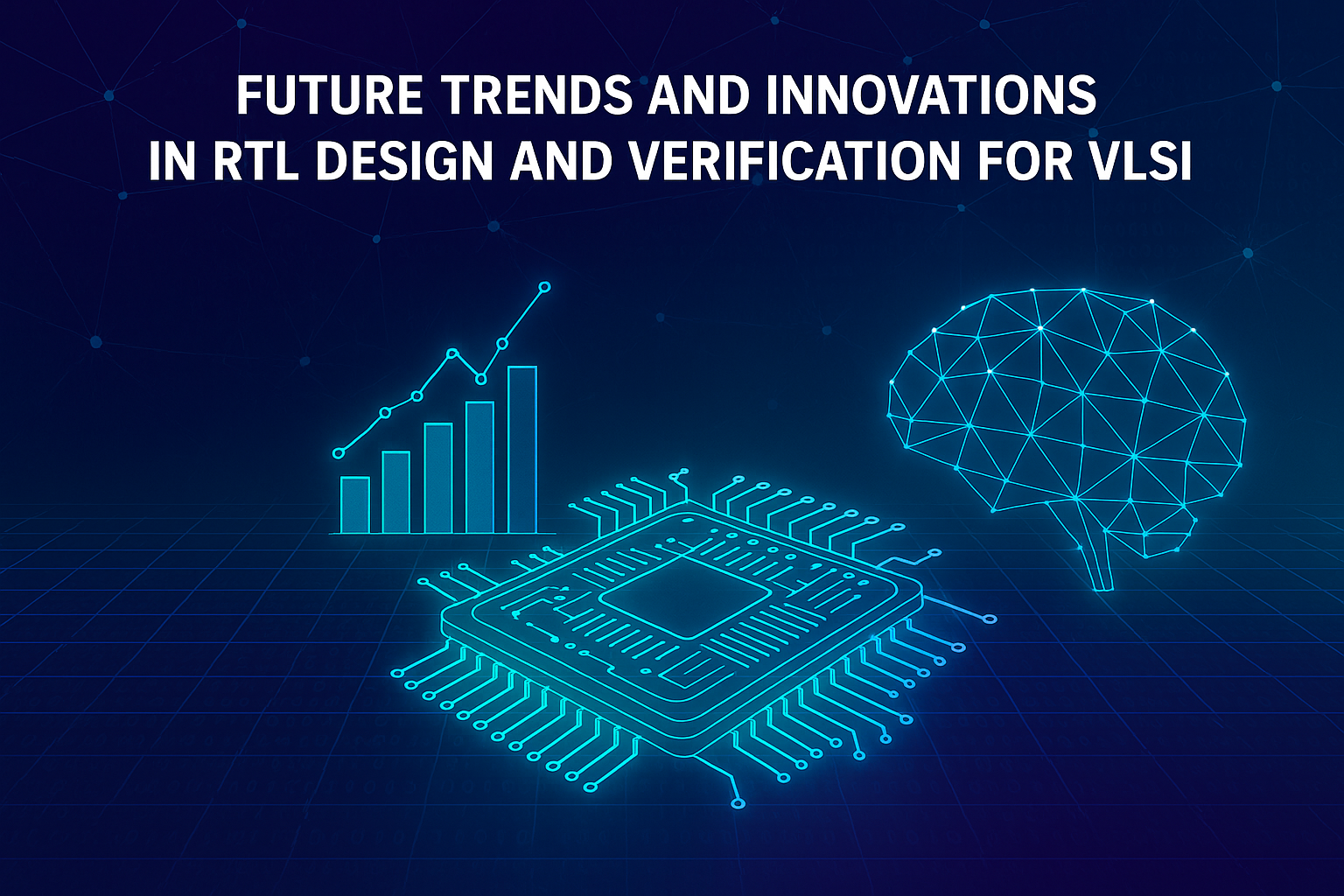Future Trends in RTL Design & Verification | VLSI Innovations
The world of VLSI (Very Large Scale Integration) is rapidly evolving, and nowhere is this more evident than in the realms of RTL (Register Transfer Level) design and verification. As technology nodes shrink, design complexity increases, and time-to-market pressures grow, the demand for innovation in RTL methodologies has never been greater.
In this article, we’ll explore the emerging trends and groundbreaking technologies shaping the future of RTL design and verification. Whether you’re a student, professional, or educator in VLSI, staying ahead of these shifts is key to remaining relevant in the semiconductor landscape.
Why RTL Design and Verification Matter
At the heart of any digital chip lies the RTL code. It represents the behavior of circuits before they’re synthesized into actual gates. Verification ensures that this design does what it’s supposed to do—without costly bugs or functional mismatches.
In modern chip design, over 70% of the project timeline is consumed by verification efforts. With the increasing scale of SoCs (System-on-Chips), there’s a growing need to innovate both design and verification flows to keep pace with performance and quality demands.
1. Rise of AI and ML in RTL Verification
Artificial Intelligence (AI) and Machine Learning (ML) are now entering RTL verification, especially in test generation, coverage analysis, and bug prediction.
What’s Changing:
- ML-based tools can predict which parts of the design are more error-prone
- AI can suggest high-value test cases based on past regressions
- Coverage gaps are identified more intelligently, reducing manual effort
This shift allows engineers to spend less time writing exhaustive testbenches and more time focusing on core logic and performance tuning.
2. Automation of Testbench Generation
Creating testbenches used to be one of the most time-consuming parts of verification. With advanced UVM (Universal Verification Methodology) and testbench generators, automation is now a major trend.
What to Expect:
- Constraint-driven testbench synthesis
- Reusable verification environments
- Improved randomization and error detection
This evolution not only shortens development cycles but also reduces human error—ensuring more robust verification setups.
3. Growing Adoption of Portable Stimulus
The Portable Stimulus Standard (PSS) by Accellera is gaining traction. It allows the same test scenario to be reused across multiple abstraction levels—block, subsystem, or system.
Why It Matters:
- Test scenarios become reusable and scalable
- Saves time when moving from simulation to emulation or prototyping
- Enhances collaboration between design and validation teams
As chips become more complex, the ability to verify with portability across platforms will be a critical advantage.
4. SystemVerilog + UVM Advancements
While SystemVerilog and UVM remain industry standards, enhancements are being made to address newer challenges:
- Enhanced functional coverage constructs
- Tighter integration with formal verification
- Improved transaction-level modeling
Tools like Synopsys VCS, Cadence Xcelium, and Siemens Questa are constantly updating their UVM libraries and coverage capabilities to handle today’s massive SoC designs.
5. Formal Verification as a Parallel Flow
Formal verification is no longer an afterthought. It’s increasingly being run in parallel with simulation-based verification for early detection of critical issues.
Benefits:
- Complements UVM by proving properties rather than just testing
- Identifies unreachable states or deadlocks
- Used effectively for safety-critical designs (automotive, aerospace)
With formal methods now more accessible via automation, more teams are integrating it early in the RTL cycle.
6. Cloud-Based Verification Environments
As chip design becomes distributed and collaborative, cloud-based RTL verification is picking up momentum.
Advantages Include:
- On-demand scalability of simulation resources
- Collaborative debugging via cloud dashboards
- Seamless integration with CI/CD systems
Companies like Google and Amazon are leading the way by running hardware design flows entirely in the cloud—paving the way for more scalable and remote-friendly verification frameworks.
7. High-Level Synthesis (HLS) Integration
High-Level Synthesis allows for designing hardware in C/C++ and then synthesizing it into RTL. While not replacing traditional RTL, HLS is being integrated into early stages of design and verification for faster prototyping.
Emerging Use Cases:
- Signal processing blocks
- AI accelerators
- Interface controllers
Verification teams are now validating HLS-generated RTL alongside hand-coded RTL, ensuring consistency and performance gains.
8. Real-Time Debugging and Visualization Tools
Modern RTL development tools now offer real-time waveform visualization, assertion tracking, and functional coverage dashboards.
Examples include:
- DVE (Synopsys)
- SimVision (Cadence)
- Verdi (Siemens)
These tools help engineers debug and validate designs more quickly, especially during integration and regression phases.
9. Emphasis on Reusability and IP Integration
As design cycles get shorter, companies are reusing pre-verified IP blocks across multiple projects. This has led to a renewed focus on RTL modularity and standardized verification IPs (VIPs).
Key Focus Areas:
- IP-centric design flows
- Parameterizable RTL for easy integration
- VIPs supporting multiple protocols (AXI, SPI, USB)
Engineers are now expected to write clean, modular RTL code and create reusable test environments—skills that are becoming non-negotiable in hiring.
10. Industry-Academic Collaborations and Skilling Platforms
With RTL design and verification becoming increasingly sophisticated, industry is partnering with academia and skilling platforms to bridge the knowledge gap.
Institutions like ChipXpert now offer:
- Hands-on RTL design with Verilog and SystemVerilog
- Real-world simulation and synthesis workflows
- UVM-based verification projects
- Exposure to both simulation and formal flows
This approach helps students and professionals transition smoothly into RTL-based roles, boosting career prospects significantly.
If you’re looking to start or upskill your RTL journey, don’t miss this post:
How to Start Learning VLSI as a Student (Step-by-Step Guide)
Conclusion
RTL design and verification are the pillars of digital chip creation—and they’re evolving fast. From AI-powered verification to cloud-based toolchains and portable stimulus-driven testing, the future is both exciting and demanding.
For anyone aspiring to thrive in this field, now is the time to upskill, explore new tools, and embrace the innovations shaping tomorrow’s chips.
Stay informed. Stay updated. And most importantly—start building.


